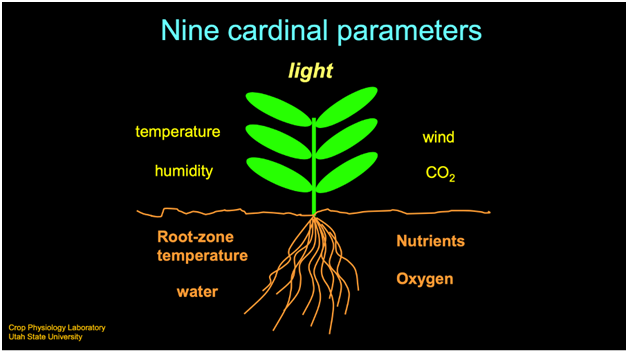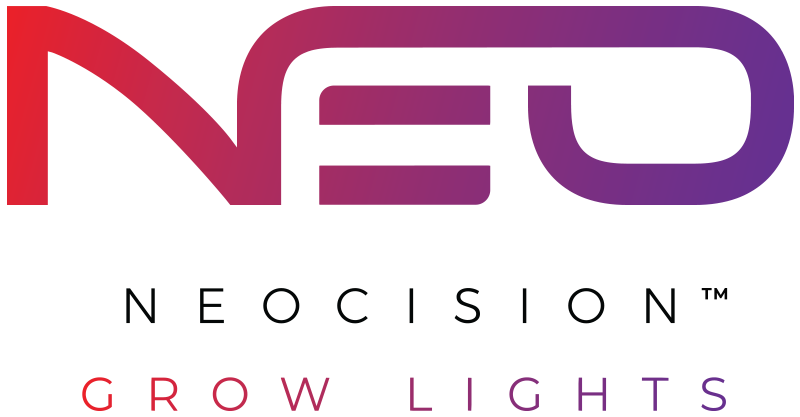What are the best LED grow lights for growers? Before you start your search for the right light fixture, it is important to understand what plants need from the light fixture you choose. You are not lighting the room for humans – you are lighting the room to create photons, or energy, the plant uses to develop and grow.
As a grower, your focus needs to be on photosynthetically active radiation, or PAR, that the plant uses. The portion of the light spectrum most visible to the human eye is in a range that, while used by plants, is the lowest energy band a plant uses for growth.
What is PAR? How does spectrum impact plant growth?

Plants have developed and established their DNA over hundreds of thousands of years. They have developed this under the full spectrum of the sun, learning how to use the sunlight as energy to grow and be healthy, while protecting themselves against harmful radiation that is in sunlight.
The best grow lights for cannabis plants today are full spectrum LED grow lights that increase the number of photons between 400-500nm (blue) as well as 600-700 nm (red).
- Blue spectrum is very important for cannabis plant growth. This color of light is best used at the sprout and vegetative stage of growth as it promotes rapid growth and development of the plant. It also reduces plant stretch in all stages of plant growth from clone thru flowering stage (this is good for cannabis plant). But blue spectrum can also reduce leaf expansion which is not good if there is too much blue. We recommend targeting 20% blue spectrum for your LED grow light, following the science and studies done by Bruce Bugbee, a leading plant scientist.
- Red spectrum is probably the most important type of light for plants. When it comes to photosynthesis, plants are best able to make energy out of red light (15% better at driving photosynthesis than blue). In fact, many plants can grow even if they only get pure red light, although they won’t grow as big or as healthy as they do under full spectrum light.
A balance of 500-600nm (green) allows light to penetrate your canopy and allows humans to see the plant and diagnose plant health. Many LED light manufacturers incorrectly state that plants don’t use green light and the plant is green because it reflects the green light. Most of the green light is useful in photosynthesis and is absorbed by the plant. Green light is the least efficiently used color of light in the visible spectrum, but it still plays an important part in the health and growth of your plants. Leading horticulturalists like Dr. Eric Runkle from Michigan State University and Dr. Bruce Bugbee both espouse the importance of having the full spectrum provided, including 500-600 nm. We highly recommend reading “Growing with Green Light” by Dr. Eric Runkle.
What are the nine cardinal parameters impacting plant growth and development? Why are they important?
The sun makes plants grow because it provides the energy that plants need for photosynthesis. Light (radiation) is the most critical parameter and drives the other 8 parameters. Most of time, we are trying to optimize the other 8 parameters based on given light (sun). Now that we can change the spectral light quality, we can use light to optimize the other 8 parameters.

We highly recommend the video “Maximizing Cannabis Yields with Dr Bruce Bugbee”on YouTube.
Why are full spectrum LED grow lights best for indoor horticulture?
Over the past 3 to 4 years, there have been major advances in LEDs, which are merely a semiconductor that emits light when an electrical current flows through them. Electrons in the semiconductor recombine with electron holes, releasing energy in the form of photons. Just like all chips used within computers, phones, televisions and other electronics, the LED has seen significant increases in efficiency for use in lighting.
Before technological advancements in full spectrum LEDs led by Samsung in 2017 with their release of the 301B mid power LED, full spectrum diodes alone could not create enough luminous flux across the full spectrum. Luminous flux indicates how much light is emitted by a light source. This refers to all visible light emitted by the LED in all directions.
Prior to these advancements by Samsung, companies manufacturing grow lights could only create enough light in the key energy ranges (blue and red) by using blue and red diodes in a mix that created what many still refer to as “blurple” lights. While these fixtures were somewhat effective, they could not create the yields or quality of using high pressure sodium (HPS) lighting, for years the standard for indoor cultivation.
The Bottom Line: Today, LED lights can be optimized to deliver the right spectrum for plant rotations (vegetative to flowering) to maximize strong growth, minimize transition times, and maximize yields. But remember, many scientific papers have confirmed that all wavelengths in the typical PAR range (400-700 nm) will grow plants, and spectrum significantly impacts plant development. What is scientifically validated is that a plant can create more energy (increase photosynthesis) with the blue and red spectrum. A widely propagated myth on the Internet is the claim that plants do not use green light is simply false.
Many LED manufacturers attempt to focus your attention on their magical growth spectrum by publishing the McCree curve that includes Chlorophyll A and B absorption spectrum chart. Citing this chart, they mention that plants are green, so plants reflect green light from the full-spectrum light source without absorbing it for use in photosynthesis. There is simply no magical spectrum that is going to allow a 50W fixture to replace a 1000W fixture because it only uses the “wavelengths that plants need.” Plants certainly have numerous pigments and photoreceptors across the PAR range and use all light – blue, green or red.
Make sure your LED grow light contains the full spectrum needed for photosynthesis! If an LED manufacturer touts a specialized spectrum that only delivers wavelengths that the plant needs, you should challenge them to publish their PAR measurements – PPFD (photosynthetic photon flux density) and PPF Efficacy (photosynthetic photon flux efficacy).
Randy Shipley is a co-founder and the President of RSX Enterprises and is responsible for sales, marketing, product development and technology. He also leads RSX’s design, build and facility start-up advisory services team, with a focus on assisting cultivators with facility and floor plan design assistance for lighting, benching, HVACD and other critical growing systems. You can connect with Randy on LinkedIn!


